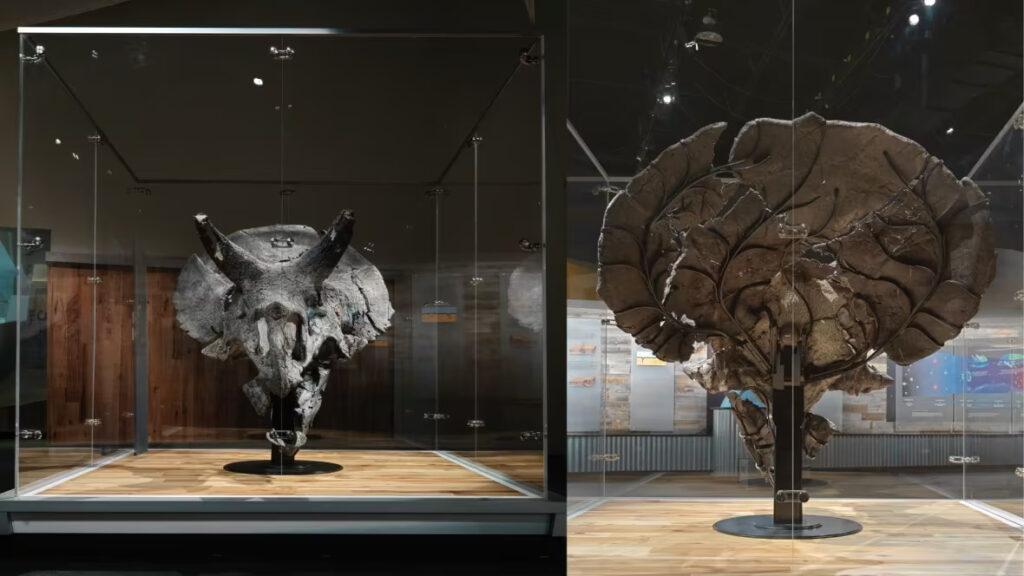After a laborious seven-year effort, the Royal Tyrrell Museum in Drumheller, Alberta, proudly unveils the most remarkably preserved and comprehensive triceratops skull ever found in Canada. Referred to as the “Calli” specimen, this remarkable discovery is now available for public viewing, having remained hidden since its unearthing in 2014.
The significance of this fossil is truly exceptional. The uniqueness of the “Calli” specimen stems from its geographical origin, the antiquity of the surrounding rock layers, and the astonishing degree of preservation it has retained over millions of years.

Ten years prior to the uncovering of this triceratops skull, Alberta was ravaged by catastrophic floods. In the aftermath, the team at the Royal Tyrrell Museum was engaged in flood mitigation paleontology work when the “Calli” specimen was stumbled upon.
Canada is not renowned for being a triceratops fossil hotspot, making this discovery all the more remarkable. Located in the foothills of southwestern Alberta, an area where dinosaur fossils are generally scarce, the skull was affectionately named “Calli” after the nearby Callum Creek.
Extraction of the massive skull and most of its jaw pieces was a remarkable feat accomplished over the course of a month in 2015, carried out with the aid of helicopters. Regrettably, the rest of the triceratops skeleton remained elusive.
This awe-inspiring skull dates back to the Late Cretaceous period, approximately 68 to 69 million years ago. The specimen’s burial history is discernible from the fossilization process it underwent. Distinct rock layers were observed, and poorly preserved horn tips suggested exposure to extensive weathering and erosion, indicating that the rest of the skeleton likely eroded away, with only the lower jaws discovered downstream.
From 2016 to 2023, Royal Tyrrell technician Ian Macdonald dedicated more than 6,500 hours to meticulously preparing this exceptional fossil. A staggering 815 kilograms of rock were carefully removed to unveil the hidden beauty of the skull. Notably, this triceratops skull is not only the largest ever prepared at the museum but also ranks as the third largest on public display.
For Macdonald, this project was destined to be unforgettable. He marveled at the specimen’s extraordinary beauty, describing it as “unusually beautiful” due to its remarkably well-preserved bone. The intricate grooves, pits, and ridges, as well as its subtle three-dimensional form, make it a truly captivating project that has been immensely rewarding, albeit challenging.
Macdonald’s work went beyond the conventional rock removal process; it entailed numerous technical intricacies and problem-solving, adding a layer of excitement to the project.

Triceratops, the largest and most iconic member of the ceratopsian group of beaked herbivorous dinosaurs from the Cretaceous Period, now enjoys its deserved place of honor in the museum.
The “Calli” specimen, this extraordinary triceratops skull, is a prominent attraction within the Royal Tyrrell Museum’s latest exhibition, “Fossils in Focus,” which is currently open to the public.
Caleb Brown, curator of dinosaur systematics and evolution at the Royal Tyrrell Museum, emphasizes the immense significance of this addition to their collection. He notes that the triceratops is among the top three dinosaurs that instantly come to mind when thinking of these prehistoric creatures. Remarkably, until now, the museum lacked an original triceratops specimen, making the “Calli” specimen an invaluable addition. Notably, it stands as the best-preserved and most complete triceratops specimen to ever emerge from Canada.
